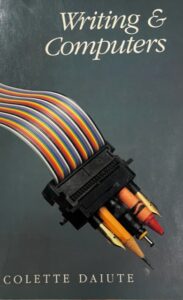In Remixing Composition: A History of Multimodal Writing Pedagogy, Jason Palmeri argues that the values of encouraging students to compose in multiple modalities is apparent. As is apparent in the discussion surrounding the Takayoshi and Selfe essay, not everyone agrees, and the discussion is far from settled. Palmeri defines composing as “The selection and ordering of elements” (26). Considering composing or composition as broadly as that makes it reasonable to include modalities beyond just alphabetic (composition) and musical (composing). When referring to Geneva Smitherman’s work Talkin and Testifyin, Palmeri suggests that examining the same work through different modalities, for example reading the text of Malcolm X’s “Ballot or the Bullet” speech and then listening to Malcolm X’s actual delivery of the same speech, can deepen the understanding of the speech as one mode will enhance the other by adding more information or a broader perspective.
Palmeri also credits multimodal or multimedia composition as a tool to help students release from their fear of “correctness”, or the grading that is typically associated with making errors in alphabetic compositions. Since many writing instructors do not have the experience grading multimedia projects, assessment and grading could tend to be less rigid and students encounter a “freeing” feeling, allowing them to generate ideas and creatively express themselves.He also suggests that multimodal activity might be employed as an organizational technique to use during the planning process for an alphabetic writing project. In other words, multimodal and “traditional” writing projects need not be mutually exclusive, or at odds. That said… (or written, rather. On a computer)
Also, even if the pathos of some of the responses to the Takayoshi and Selfe essay imparted a sense that some sort of gauntlet was being thrown down, I can absolutely appreciate the arguments of those who don’t want to toss out the composition pedagogy/alphabetic writing baby with the multimodality bath water. (Muddled metaphor, anyone?) On some levels, I agree. While I do see many opportunities for multimodal composition techniques to enhance students learning and creative expression, I also feel we should acknowledge that not every student (or writing instructor, for that matter) will benefit from or be skilled at multimodal communications.
I don’t think the binary between multimodality and writing, though, is a useful way to frame these questions. There is, lurking under this writing/multimodality binary some of the same long-disputed assumptions about writing that underlie the literacy/orality binary. There are also questions of power in relation to language and modality, in the oft-iterated new version of the “Johnny can’t write” argument: “what is the use of focusing on different modalities if my students can’t write?!” It is worth noting the particulars of this question, within which context(s) it is put forth, by whom, and in what position of power, to be self-appointed arbiter who can and cannot write, and what is and is not “correct” meaning-making.
Palmeri, Jason. Remixing Composition: A History of Multimodal Writing Pedagogy. Carbondale: Southern Illinois University Press, 2012. Print.
Another binary in most discussions in writing studies about multimodal work: it’s assumed we are all referring to digital and non-digital writing, when in fact multimodality encompasses much more (body language, woodwork, sculpture, crochet, performance art, etc.). Just thought these old book covers from the 80s would be an apt multimodal addition to the post. 🙂






Yes, great point– and it also brings up the question– what do we mean by “writing” anyway anymore?